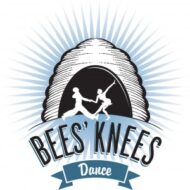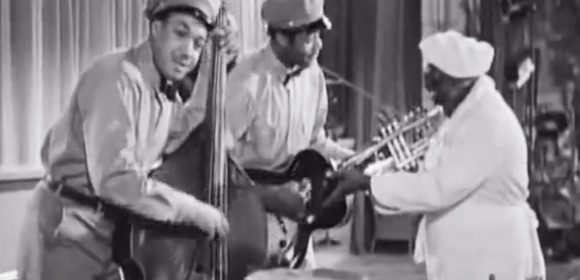Musicality is one of the most important elements of the dance we all do, but it’s also the most difficult element to teach. Some people believe that it’s something you either have or you don’t, but this is simply not true. It is, however, more difficult to illustrate because it involves training your ears and brain more than something physical that you can see and mimic. I’ve taught music for over 10 years and can attest that teaching guitar is always easier than teaching voice. When I see you doing something wrong on guitar I can have you look at it, show you it on my instrument, and even physically move your body to do the right thing. With voice I need to teach you to use parts of your body that neither of us can see, usually with exercises where you are visualizing something happening. But just because something is difficult to learn, doesn’t mean there are people who have exclusive access to it and people who don’t. While previous experience or ways of viewing things may make some people take to it quicker (what some refer to as “Talent” and I refer to as “luck”) almost anyone can learn it with patience.
As a group, all of the Bees’ Knees teachers have talked extensively about how to approach this broad and often complex subject. All of us have come to musicality by [sometimes, widely] different paths. In this series I would like to take you down my path a bit – musician first, dancer later – by giving you an introduction to musicality from the band’s perspective. It’s my belief that de-mystifying the band stand can really change how you listen to and interpret the music that you’re dancing to.
In this segment I’m going to address the Bass.
Also referred to by Milt Hinton as the ‘Atlas of the jazz band’ because they carry the rest of the band on their shoulders. In jazz we have what is often called the Upright Bass, Stand-Up Bass and/or Acoustic Bass, although most often lovingly called the “Upright”. It’s a beautiful wood behemoth of soft hugs and warm tones that is probably the single most consistent enforcer of “the Feel” in jazz music (in cooperation with the drums). Some may argue that the drums inform the feel more, but I would counter that the drums are responsible for many different things, including setting up sections, holding the band in time, and creating a large range of dynamics. I call the bass the most consistent enforcer of the feel because, well, that’s pretty much EVERYthing they do. Using simple rhythms and outlining chord changes the bass gives us the foundation on which we build the rest of the band’s contributions. As teachers of swing dance we often talk about dynamics (ie; the ability to dance lively to loud music or more chilled out to quieter) as one of the most base forms of musicality. In my opinion, dancing in and being aware of the feel of the music is equally important (some would even say they’re the same subject) and one of the first things dancers should try to grasp. We can do this by paying direct attention to the bass and what they’re choosing to do. Are they walking? Playing a half time feel? Being able to listen through the cacophony of harmony and melody to hear that singular instrument should get you well on your way.
A Quick Note: There may be some musical references which need explaining in this. If there’s anything you’d like clarification on feel free to mention it in the comments below!
The Half-Time Feel (or 2 Feel)
This is one of the most common bass feels among older recordings because this was how a lot of early jazz was played. While the guitar is often chugging through every single beat, the “half time feel” (or ‘2 Feel’ or ‘In 2’) plays on beats 1 and 3. This may seem odd since in Jazz we snap on beats 2 and 4, but this actually creates a grounding counter balance to where a lot of the rest of the band places their emphasis. In this way the bass keeps our butts connected to the floor, even as our feet play around with rhythm. Bandleaders are more likely to use terms like ‘2 feel’ when asking for this on the band stand, but it’s also something most bass players will just do as they see fit, which is often when they want to create space or keep the feel of faster songs more relaxed and bouncy. Here’s an example of it in Slim and Slam’s 8, 9 and 10:
When you tap along on all beats you’ll notice that this is actually peppy for a medium swing, but feels pretty chill because of the space the bass is leaving. There will definitely be a class to tell you ways you can physicalize this (hard to do in a blog), but the goal of this series is to hip your ears to what’s going on.
The Walking Bass Line (or 4 Feel)
It was never uncommon in this era for the bass to play on every single beat near the end of a phrase as a means of picking up the energy into a new section, but over time this action became the way some entire sections were played, and then later, entire songs. This was coined the “walking bass line” and, as suggested, simply involves the bass player playing on all beats; 1, 2, 3 and 4. When you hear this at the dance the band is usually trying to pick up the tempo and take out some of the bounce. Walking bass lines tend to have a lot of drive and feel more smooth than their ‘2 Feel’ counterparts. This can be really nice to listen to, and even dance to in some situations, but some people find these bass lines more difficult to interpret movement to. This can be because it’s easier to ‘lose beat 1’ if the bass player isn’t accenting any of the beats in particular. In more modern jazz bands this can actually be the desired effect (that the feel isn’t quite so predictable), but as dancers it can be frustrating. When you hear this the bass should definitely be giving you ideas on feel, but you may need to turn to other instruments if you want a clear sense of where the phrase starts (finding beat 1). Here’s an example of Charlie Parker playing Yardbird Suite. Beat 1 should be easy to find because the melody helps us along, but see if you can hear what I mean about the consistent/smooth feel of it compared to jazz from earlier on:
(As a bonus, here is a close up of a bass player “walking”)
Riffs
Finally, we come to Riffs. Taking a cool musical line and repeating it (turning it into accompaniment via repetition) is referred to as a “riff” in music. An iconic example would be the Beatles’ Twist & Shout. You’ll notice the guitar part isn’t really “chords” per say. It’s more like a melody itself that is played over and over. This also happens in jazz, if not as often as in pop music. In jazz it’s common that when the “riff” does appear that it’s played by the bass player (Slap That Bass, All Blues, So What). These will each have their own feel, so there’s not much to explain except to say, this is the next most common variation to hear after 2 Feel and 4 Feel. From our lexicon, here is a later recording of Ray Charles playing Rockhouse (Parts 1 & 2):
Homework
I encourage you all to go through a bunch of jazz recordings and where possible (since bass in older recordings can be really hard to hear) identify which of these three categories that song’s bass line falls into. Think you’ve stumbled on an entirely new kind of line? Let me know in the comments! I can probably shed some light on what you’re hearing.
Up next will be Drums! Stay tuned!


